Nvidia's recent RTX 5060 wasn't met with a warm reception, largely due to controversy over how Nvidia decided to handle reviews for the graphics card, and its 8GB frame buffer. Despite earning some criticism, one aspect of the RTX 5060 that hasn't gotten enough attention is just how much faster it is over the RTX 4060. Although the RTX 5060 falls short of competitors like the Arc B580 and RX 9060 XT, it's much better than you probably think when stacked up against last-gen's RTX 4060.
-
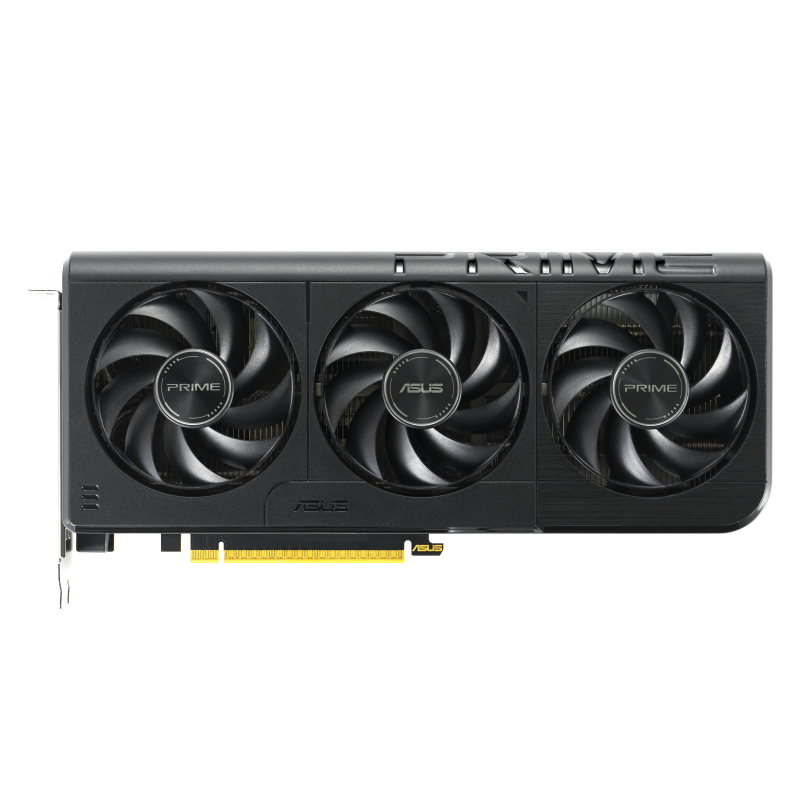
Memory Clock Speed 1750MHz
Architecture Blackwell
Process TSMC 4N
Shader Units 3840
Ray Accelerators/Cores 30
AI Accelerators/Cores 120
Pros & Cons
- MFG enables visuals that otherwise wouldn't be possible
- Widely available at or around MSRP
- Only requires a single 8-pin cable
- Runs into serious issues above 1080p
- MFG can't overcome VRAM limitations
- Stiff competiton around the same price from AMD and Intel
-
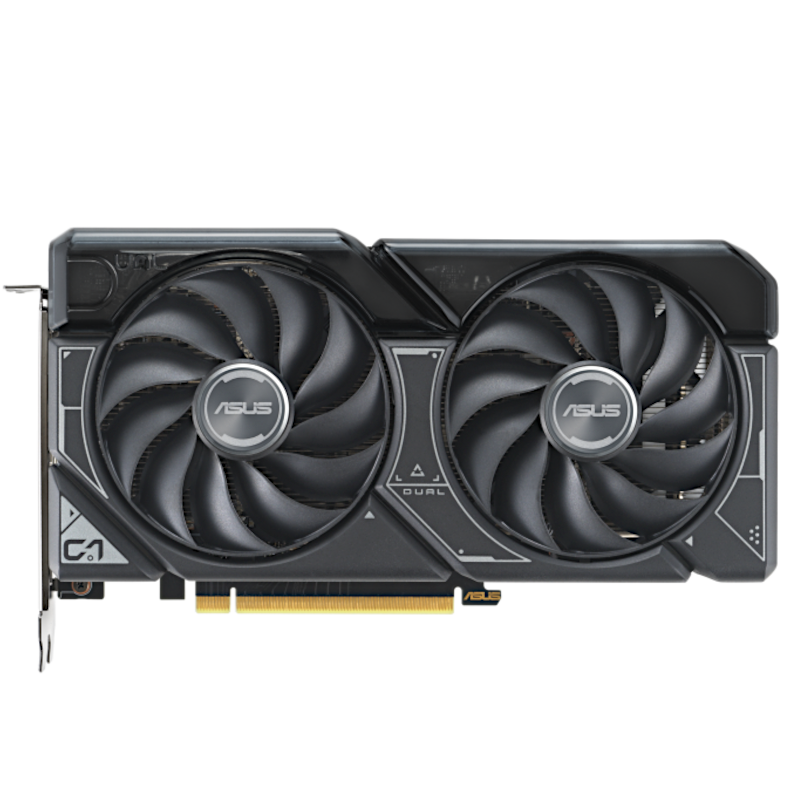
Memory Clock Speed 2125 MHz
Architecture Ada Lovelace
Process 5 nm
Shader Units 3072
Ray Accelerators/Cores 24
AI Accelerators/Cores 96
Pros & Cons
- Secondhand models as low as $200
- Still has access to DLSS 4
- Decent 1080p performance in modern games
- Limited 8GB frame buffer
- Can't use Multi-Frame Generation
Nvidia RTX 4060 vs. RTX 5060: Shockingly similar specs
Even with a generational gap
Despite being from different generations, the RTX 4060 and RTX 5060 are surprisingly similar when you compare them spec-for-spec. The RTX 4060 leverages Nvidia's Ada Lovelace architecture, while the RTX 5060 is based on Blackwell, but both GPUs are built on the same N4 node from TSMC. Rather than a pure process advantage, the RTX 5060 justifies its existence with a handful of spec bumps across the board. Although it's usually not a good idea to compare specs like core count and clock speed across two GPUs, the closeness in process and architecture make the RTX 4060 and RTX 5060 more alike than different.
The RTX 5060 has a clean 25% bump in core count over the RTX 4060, and that carries across CUDA, Tensor, and ray tracing cores. The boost clock speed for each GPU are basically in lockstep, but the RTX 5060 interestingly comes with a 450MHz boost on the base clock speed. More cores and clocks mean a higher power draw, and sure enough, the RTX 5060 demands more power than the RTX 4060. It only demands more on a technicality, though. It has a TDP that's 30W higher, but despite that, Nvidia says you'll only need a 300W PSU for either card.
-
Asus Dual GeForce RTX 4060Asus GeForce RTX 5060 8GBShader Units 3072 3840 Ray Accelerators/Cores 24 30 AI Accelerators/Cores 96 120 Base Clock Speed 1830 MHz 2280MHz Boost Clock Speed 2460 MHz 2497MHz Memory Clock Speed 2125 MHz 1750MHz Memory Capacity 8 GB GDDR6 8GB GDDR7 Memory Bus 128-bit 128-bit Memory Bandwidth 272 GB/s 448GB/s Power Draw 115 W 145W Architecture Ada Lovelace Blackwell Process 5 nm TSMC 4N
Outside more cores and higher clocks, the RTX 5060 pulls ahead with a much more capable memory interface. The highlight is the use of GDDR7, which is even more significant compared to the RTX 4060. Unlike all other RTX 40-series GPUs, the RTX 4060 uses GDDR6 instead of GDDR6X. The RTX 5060 also bumps the L2 cache from 24MB to 32MB, providing a bit of extra cache to take some pressure off the limited frame buffer.
And that's the issue with both of these cards — VRAM. Even with a vastly superior memory configuration, the RTX 5060 will run into similar bottlenecks as the RTX 4060 when pushed to higher resolutions and graphics settings in VRAM-hungry titles.
The same price on paper
But much different in practice
Both the RTX 4060 and RTXC 5060 should cost $300. That's the MSRP set by Nvidia, and even amid inflated GPU prices, both cards were available at list price when they were released. Availability is the issue, particularly for the RTX 4060. You can find the RTX 4060 in stock, but you'll spend around $400 on the card. Meanwhile, the RTX 5060 is broadly available at retailers, both online and in-person, for $300. At this point, you're getting a worse price by buying an older product, and I don't suspect that's a mistake.
On the secondhand market, things are a bit different. The RTX 4060 is broadly listed for between $300 and $350, but if you browse through recently sold items on eBay, you'll find dozens that have sold between $200 and $250. Given the prices on brand-new RTX 5060 graphics cards right now, I wouldn't spend more than $250 on the RTX 4060 — and even then, there's an argument that you're spending too much with cards like the Arc B580 making the rounds.
Unsurprisingly, the RTX 5060 isn't represented much on the secondhand market. It's new, so the vast majority of listings on eBay are from retailers or scalpers. Most models have sold for around $350, but I wouldn't resort to picking up the RTX 5060 right now on the secondhand market. It's broadly available at retailers, and it's cheaper than the RTX 4060. The only situation where the RTX 4060 cleanly wins out is if you can find it for around $200. At that price, it's worth the money, even considering the performance disadvantage it has against the RTX 5060.
Massive generational improvement
Despite issues with VRAM
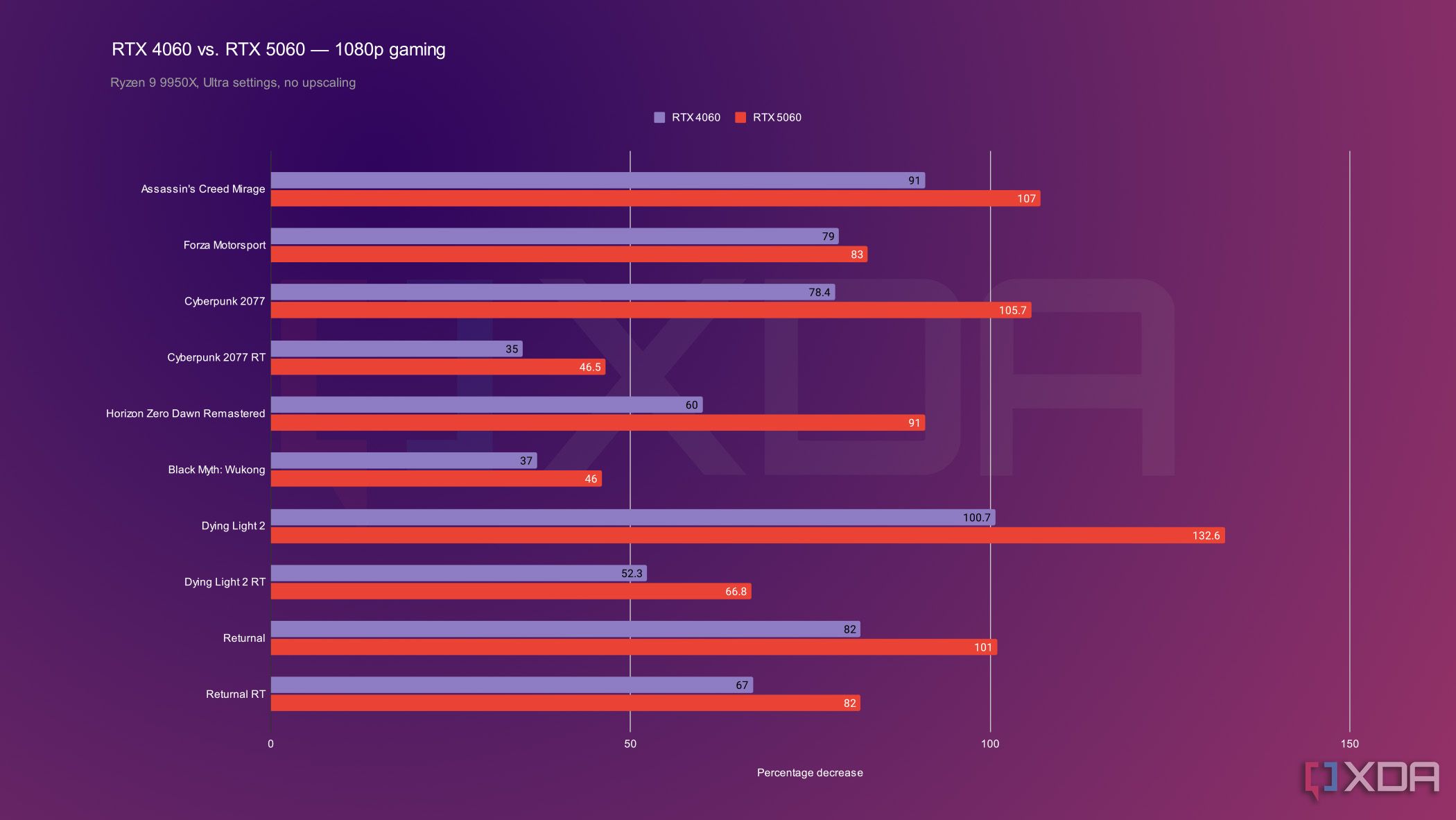
The RTX 5060 earned some criticism on release, but that's despite its generational improvements, not because of them. That becomes immediately clear when looking at the 1080p results above. It's undeniable that the RTX 5060 is leagues faster than the RTX 4060, even without a boon from Multi-Frame Generation (MFG). At 1080p, you're looking at over a 29% improvement in average performance with the RTX 5060 over the RTX 4060. That's a great generational improvement by today's standards, and far higher than what we saw with GPUs like the RTX 5070.
The performance improvements are stark in most games. In Dying Light 2, you're looking at a 32% jump, and Returnal shows a similar improvement. What's great about the uplift here is that the RTX 5060 is able to cross important performance milestones in a way the RTX 4060 can't. It achieves triple-digit frame rates in Cyberpunk 2077, Assassin's Creed Mirage, and Returnal, and it manages to pass 60 fps in Dying Light 2 with ray tracing enabled. The RTX 5060 is undeniably faster, and that's before factoring in any of the performance-boosting features in DLSS 4 — most of which are available for both the RTX 4060 and RTX 5060, short of MFG.
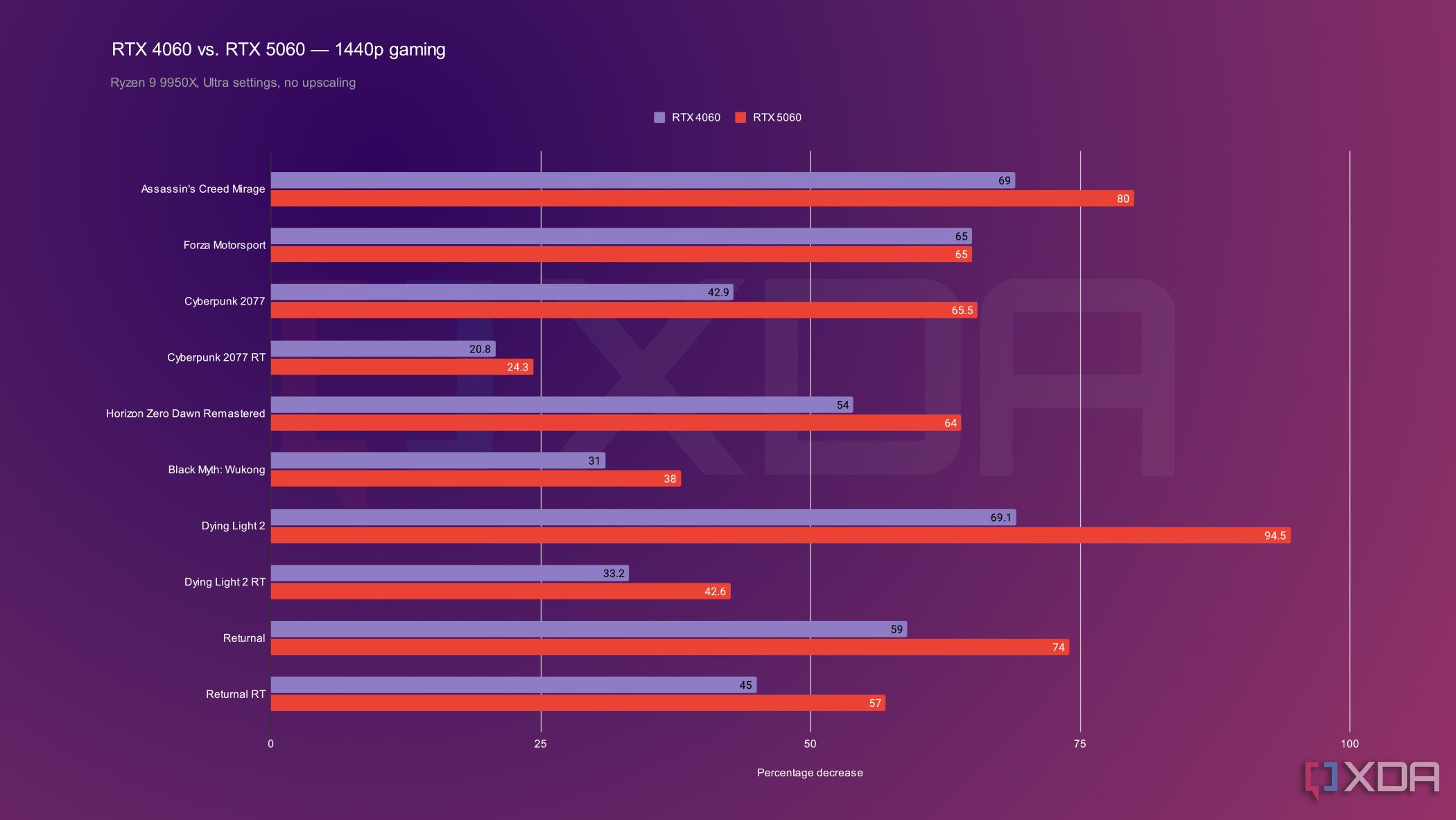
Although the RTX 5060 is a clear performance leader, both of these GPUs have a problem — 8GB of VRAM. That bottleneck starts to show up at 1440p, most clearly in Forza Motorsport, but also more broadly, as the RTX 5060's lead drops to around 22% on average. That's still a dominant performance, but it exposes the main criticism of the RTX 5060. With its clear performance advantage, it's a shame that it struggles to scale up to higher resolutions simply due to VRAM. The RTX 4060 struggles to scale up, too, but you'd expect a newer, far more capable GPU to provide more of an advantage above 1080p.
That extra VRAM is important for the RTX 5060, too. Both GPUs have access to DLSS 4, but only the RTX 5060 can use MFG with up to 4X frame generation. Frame generation increases your VRAM usage, as the generated frame needs to be stored in VRAM before being displayed. That stress only goes up when generating multiple frames, which means pushing the already limited 8GB frame buffer of the RTX 5060 further. You can use MFG on the RTX 5060, but it isn't a tool that will allow you to scale up to higher resolutions or get around VRAM limitations. It introduces its own limitations, and the RTX 5060 demonstrates that.
Even with that note, there's no denying that the RTX 5060 is way ahead of the RTX 4060. There are issues with the RTX 5060, especially against GPUs like the Arc B580 and RX 9060 XT, but in a one-to-one showdown, Nvidia's latest entry-level offering is undeniably faster than the previous generation.
Which should you buy?
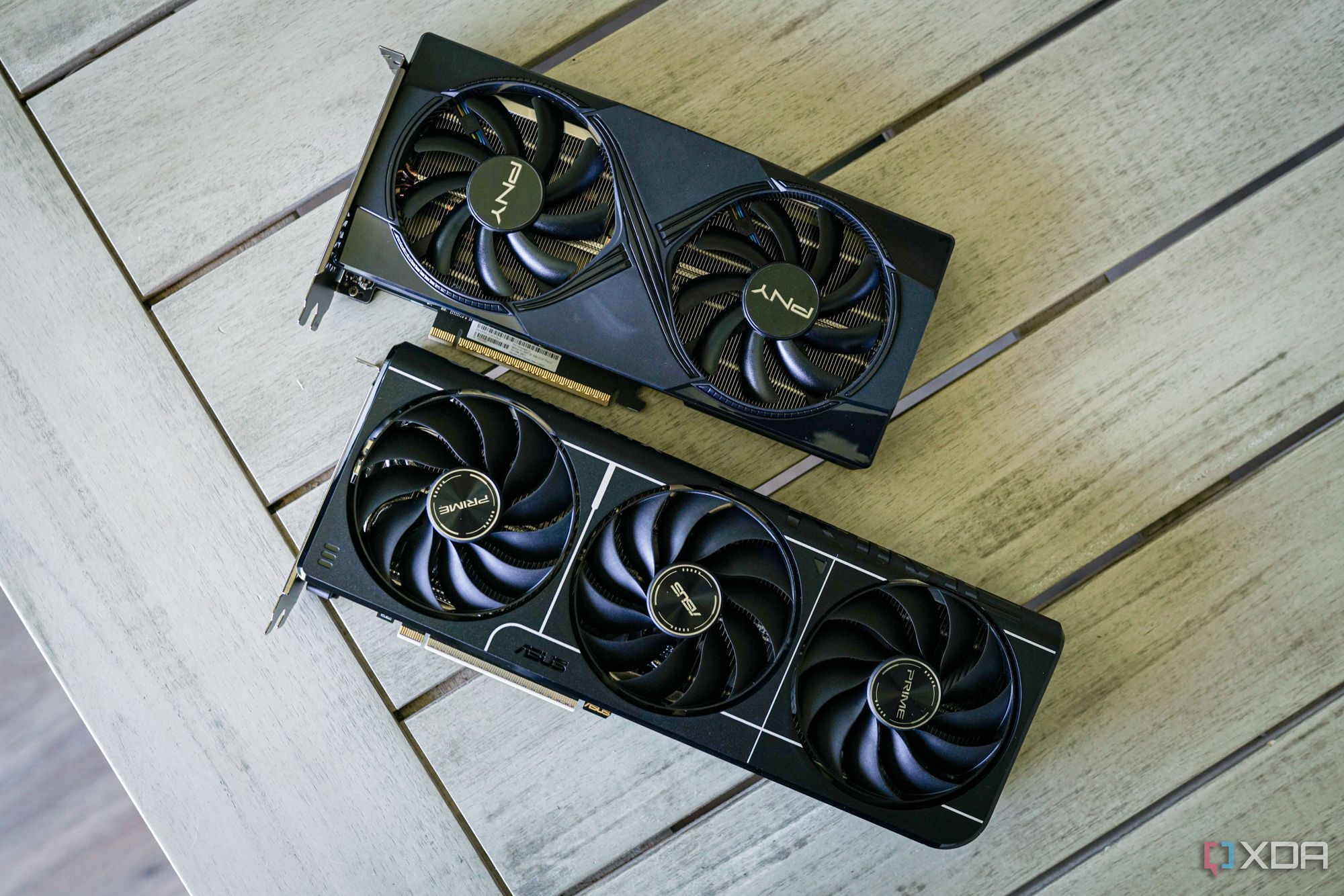
It should be obvious at this point that the RTX 5060 is the better GPU to buy. Although there's some valid criticism against the card when it comes to VRAM capacity and its reliance on MFG, it's undeniably faster and cheaper than the RTX 4060. If you want to stay in Nvidia's ecosystem, the RTX 5060 is the GPU to buy. Outside, however, both the Arc B580 from Intel and RX 9060 XT from AMD are competent competitors, with the RX 9060 XT offering clearly better performance across games.

Shader Units 3840
Ray Accelerators/Cores 30
AI Accelerators/Cores 120
Base Clock Speed 2280MHz
The RTX 4060 doesn't make much sense, especially if you're looking to pick up a new GPU. Still, it's worth considering if you're shopping on the secondhand market and can find a model for $200. At that price, it's cheap enough to warrant the performance loss compared to the RTX 5060.

Shader Units 3072
Ray Accelerators/Cores 24
AI Accelerators/Cores 96
Base Clock Speed 1830 MHz
Boost Clock Speed 2460 MHz
Memory Clock Speed 2125 MHz
.png)
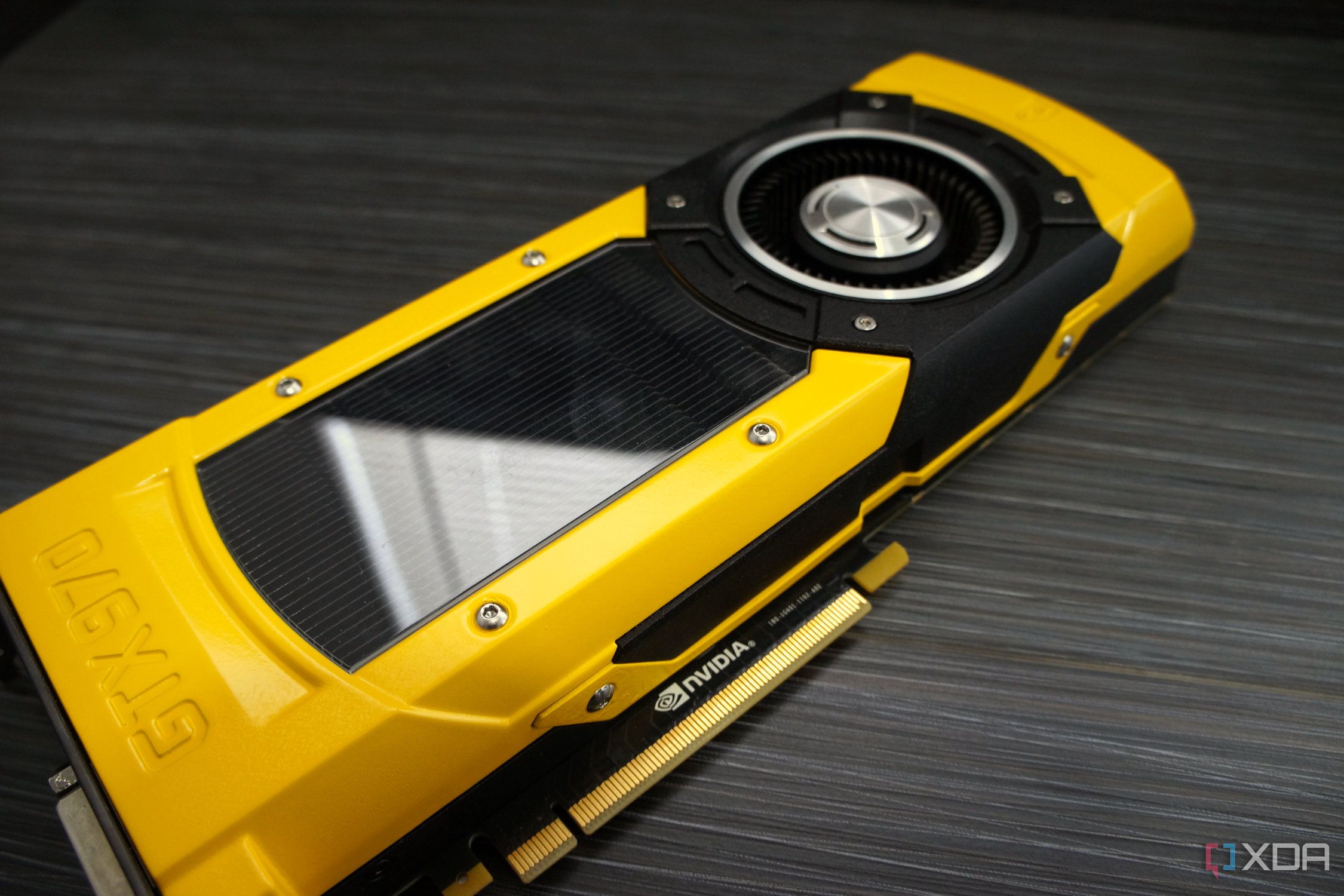
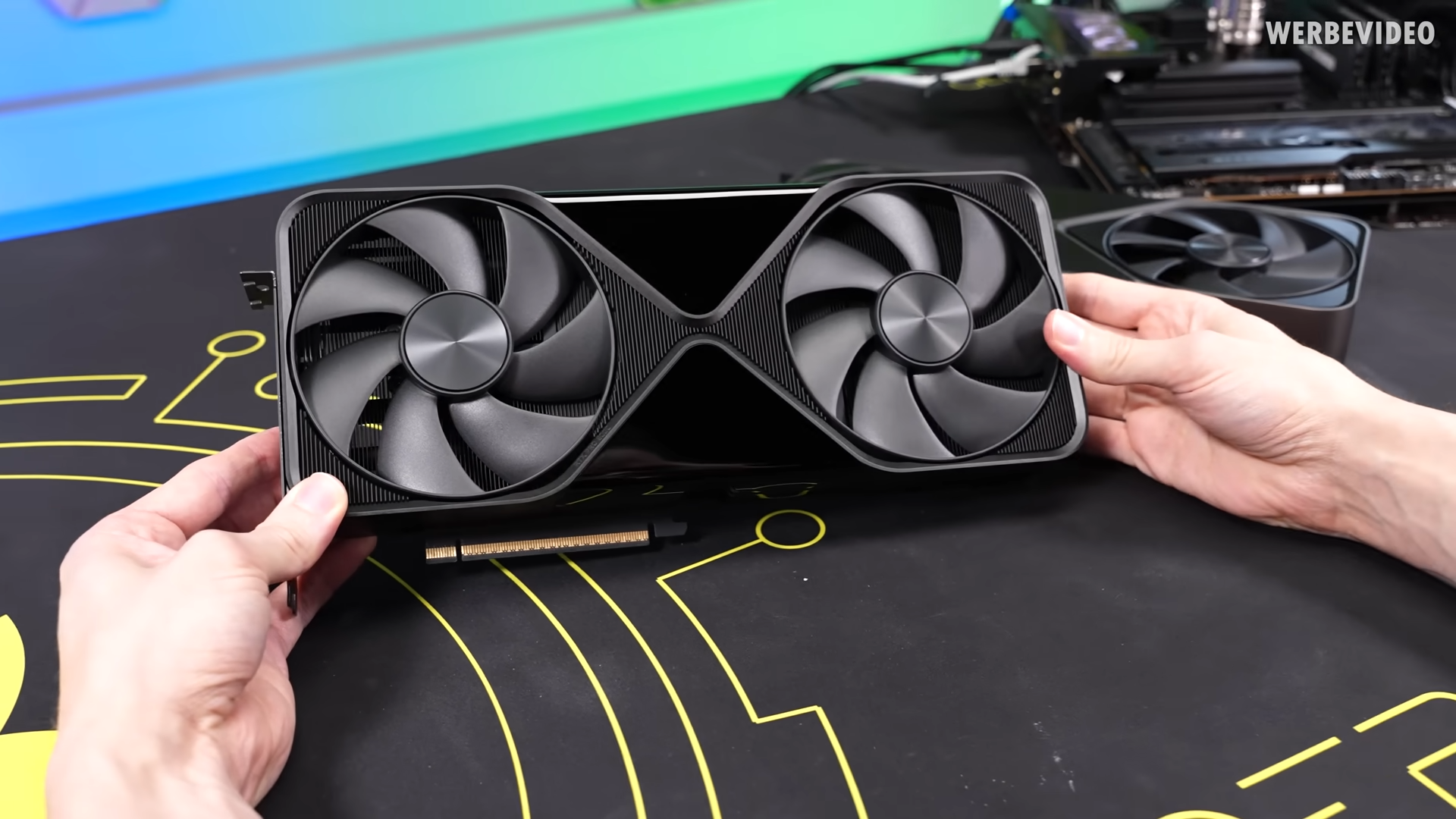
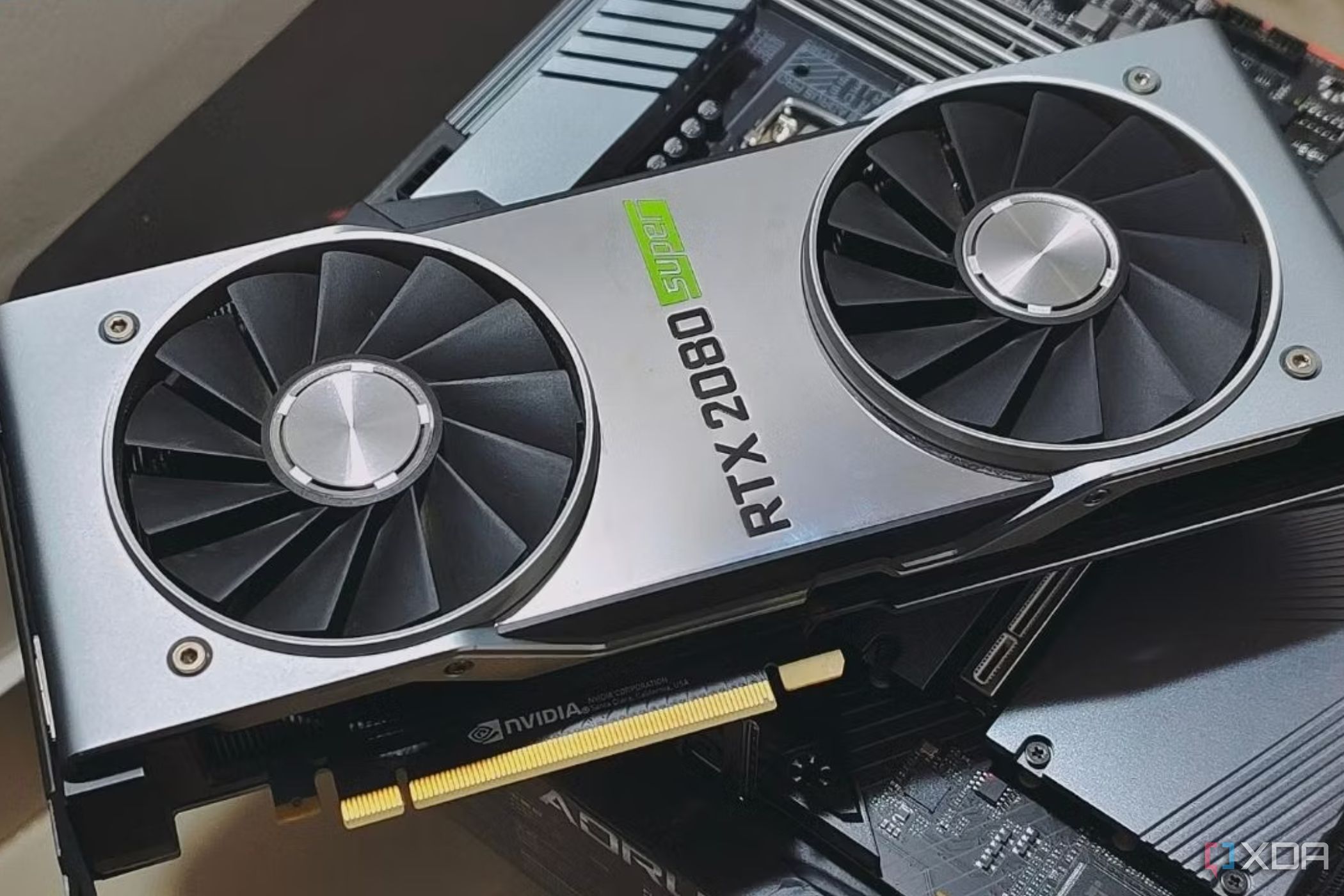




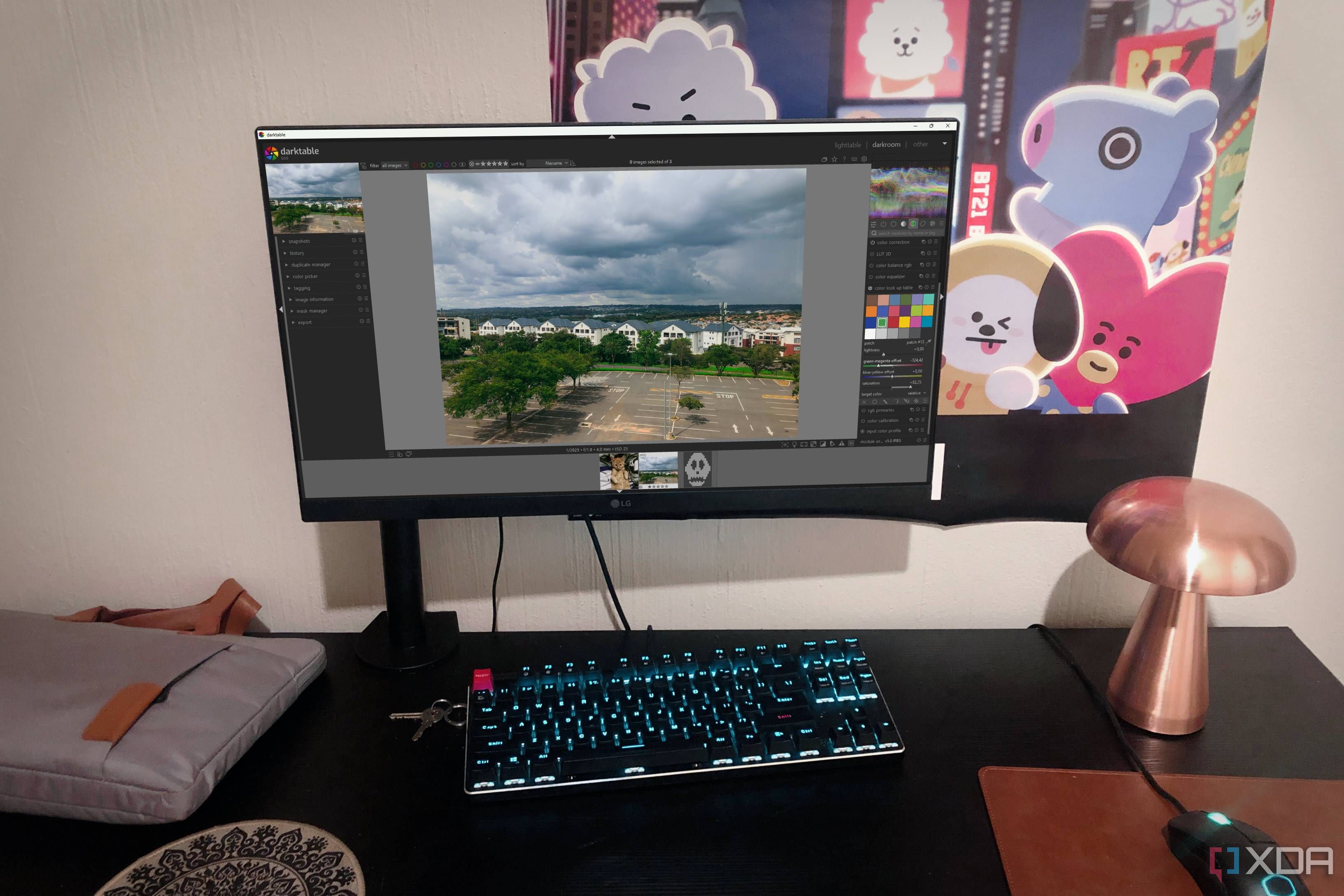






 English (US) ·
English (US) ·